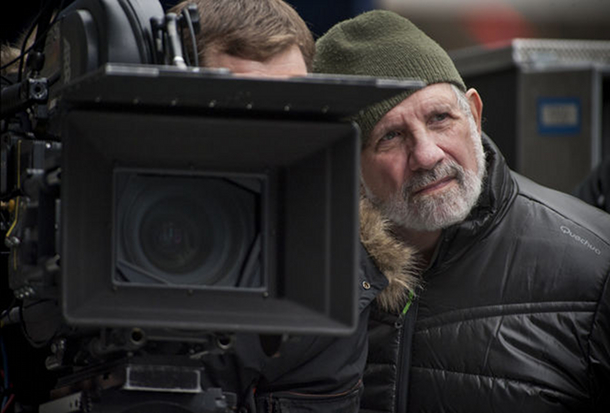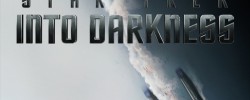
Brian De Palma Retrospective: An Introduction

Editor’s Notes: Passion is now open in limited theatrical release.
While growing up, my mother always warned me to “never judge a book by its cover.” In spite of this clichéd mantra, I grew up learning that people will always have preconceived judgments. Even in film, the name of an actor, writer, or director can add a lot of connotations to a movie. For instance, the names Terrence Malick and Robert Bresson evoke thoughts of transcendentalism and high art, while the name M. Night Shyamalan might evoke cheesy plot twists and schlocky characters. But when a film is associated with a name like Brian De Palma, there are two general reactions: “Oh yeah, he directed that!” and “He directed that?” These two responses succinctly summarize De Palma’s directorial career, which boasts a wealth of iconic characters, suspenseful homages, cult classics, and forgettable mediocrity.
These auteurist traits are not for everyone, but they still manage to yield polarizing reactions from complete disgust to die-hard fandom.
This illustrious career produced such masterpieces as The Fury (1978), Sisters (1973), Obsession (1976), Phantom of the Paradise (1974), Body Double (1984), Dressed to Kill (1980), and Blow Out (1981), but it is his tenth feature, Carrie (1976), that has become synonymous with De Palma’s excessive and campy style. Carrie is the epitome of “De Palma,” combining all of his signature camera work (slow motion, the split diopter lenses, the long tracking shots, and the split screens) with his “auteur” touches (nudity, promiscuous women, doubles, self-reflexivity, and violence). These auteurist traits are not for everyone, but they still manage to yield polarizing reactions from complete disgust to die-hard fandom.

One of the most noted aspects of De Palma’s style is his use of pastiche and self-reflexivity. Unlike Frederic Jameson’s negative views of postmodernism, De Palma’s films do not strip the references of their contextualized meaning, but rather, are appropriated and reimagined for a new (and more sexually aware) generation. Such examples include: Body Double, which uses the voyeurism of Rear Window (Dir. Alfred Hitchcock, 1954) in a pornographic setting; Phantom of the Paradise, which places the story of Faust into a rock ‘n’ roll context; Blow Out, which reimagines the premise of Blow-Up (Dir. Michelangelo Antonioni, 1966) for a sound designer who works on a scream for a topless B-movie actress; and Obsession, which gives the doubling of Vertigo (Dir. Alfred Hitchcock, 1958) an incestuous turn. De Palma takes these brilliant stories and themes, and mixes them with excessive atmospheres, vulgar characters, and bright colors. The final result is a delicious concoction of suspense and camp.
This radical potential was evident to De Palma, who once remarked that he wanted to be the American Godard, but I would argue that this does not give De Palma enough credit for how truly remarkable and inventive he is.
Revisionist critics have retracted their swords when re-evaluating De Palma’s golden period. What was once deemed misogynistic, ultra-violent, and ridiculous are now being heralded as underrated masterpieces. Unfortunately – like all filmmakers – De Palma’s style has not aged well. His growth as a director has shelled out such forgettable films as The Bonfire of the Vanities (1990), Snake Eyes (1998), Mission to Mars (2000), and The Black Dahlia (2006). Critics and moviegoers have harshly criticized these films because they know De Palma’s brilliant potential as a radical filmmaker.
This radical potential was evident to De Palma, who once remarked that he wanted to be the American Godard, but I would argue that this does not give De Palma enough credit for how truly remarkable and inventive he is. True, he inherited his polarizing sensibilities from the New Wave filmmaker, but like the wealth of references in his films, De Palma is more complicated than he would seem. He is a conglomerate of filmmakers: he has the keen understanding of suspense like Alfred Hitchcock, the oscillating adaptability of Steven Soderbergh, the self-reflexive knowledge of Quentin Tarantino, and the porn-loving appeal of Paul Schrader. The clout connotations surrounding De Palma’s name may have diminished in value, but he has left a legacy of brilliant films. Hopefully Passion (2012) can be judged at face value as a return to the old Brian De Palma, rather than an acceptance of his recent mediocrity.
Related Posts
Jose Gallegos
Latest posts by Jose Gallegos (see all)
- Brian De Palma Retrospective: Murder a la Mod (1968) - September 10, 2013
- Brian De Palma Retrospective: An Introduction - September 8, 2013
- TIFF’s Bitter/Sweet The Joyous Cinema of Jacques Demy Review:A Slightly Pregnant Man (1973) - July 11, 2013


































